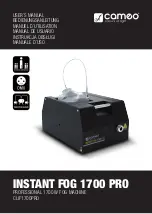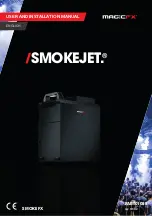
AAASewing.com
30
See Page 10
See Page 12
See Page 6
See Page 6
See Page 15
See Page 6
See Page 9
Clean the bobbin case.
Exchange bobbin.
See Page 6
See Page 6
See Page 6
See Page 12
See Page 15
See Page 6
See Page 13
See Page 6
See Page 6
See Page 6
See Page 6
See Page 10
See Page 12
See Page 10
See Page 6
Make the
stitches denser.
See Page 12
See Page 6
See Page 29
Make the
stitches coarser.
See Page 4
See Page 28
See Page 8
See page 28
See Page 29
1. The needle thread is not threaded properly.
2. The needle thread tension is too tight.
3. The needle is bent or blunt.
4. The needle is incorrectly inserted.
5. The fabric is not being drawn to the back when sewing is finished.
6. The thread is either too heavy or too fine for the needle.
1. The bobbin thread is not threaded properly in the bobbin case.
2. Lint has collected in the bobbin case.
3. The bobbin is damaged and doesn't turn smoothly.
1. The needle is incorrectly inserted.
2. The needle is bent or blunt.
3. The needle clamp screw is loose.
4. The tension of the needle thread is too tight.
5. The fabric is not drawn to the back when sewing is finished.
6. The needle is too fine for the fabric being sewn.
7. The pattern selector dial had been turned while the needle was
in the material.
1. The needle is incorrectly inserted.
2. The needle is bent or blunt.
3. The needle and/or threads are not suitable for the work being
sewn.
4. A BLUE TIPPED needle is not being used for sewing stretch, very
fine fabrics and synthetics.
5. The needle thread is not threaded properly.
1. The needle thread tension is too tight.
2. The machine is not threaded correctly.
3. The needle is too heavy for the fabric being sewn.
4. The stitches are too coarse for the fabric being new line sewn.
* When sewing extremely light weight materials, place a sheet
of paper underneath the fabric.
1. The needle thread tension is too loose.
2. The needle is either too heavy or too fine for the thread.
1. The feed dog is packed with lint.
2. The stitches are too fine.
1. The machine is not plugged in.
2. Thread is caught in the hook race.
3. Handwheel has been disengaged for bobbin winding.
1. Threads have been caught in hook mechanism.
2. The feed dog is packed with lint.
Troubleshooting
Condition
The needle thread
breaks.
The bobbin thread
breaks.
The needle breaks.
Skipped stitches.
Seam puckering.
Stitches from loops
below the work
The cloth is not
feeding smoothly.
The machine does not
work.
The machine does not
run smoothly and is
noisy.
Reference
Cause
Janome US2014 Instruction Manual
www.aaasewing.com
US2014 Owners Manual/ User Guide

































